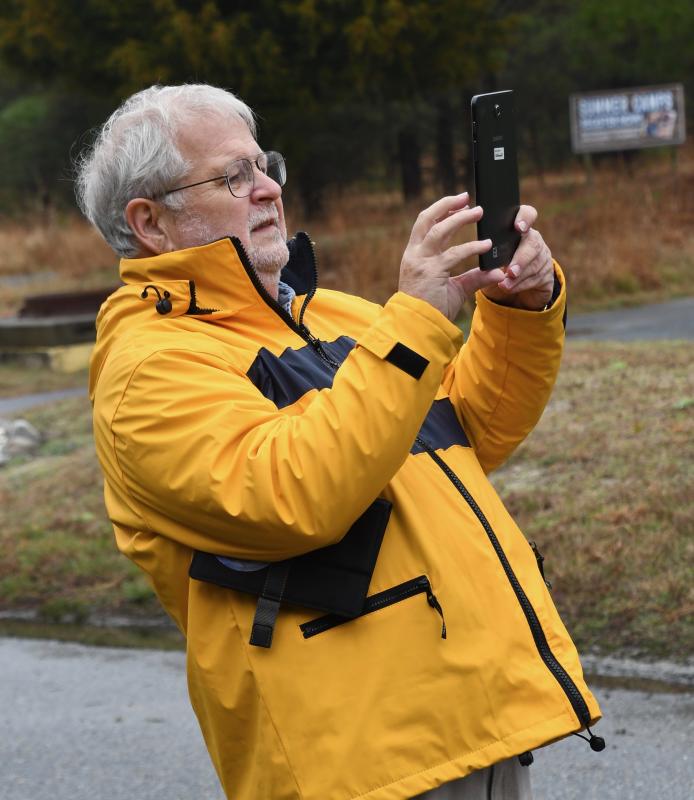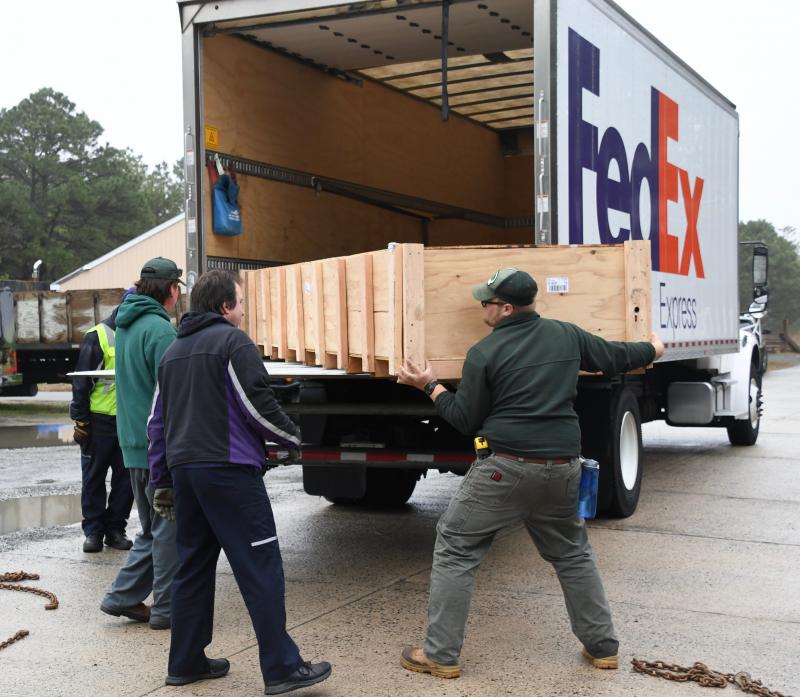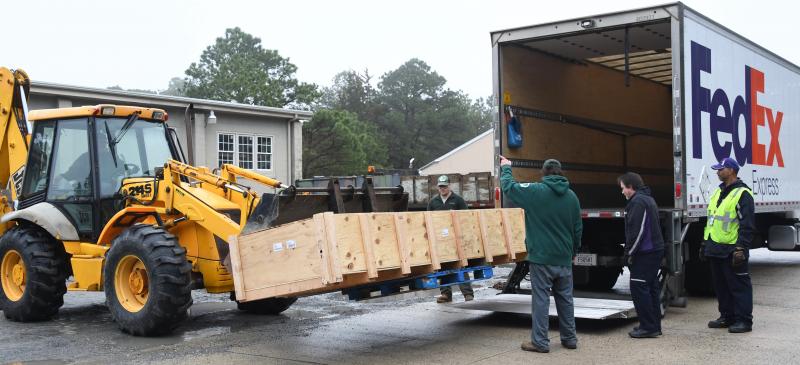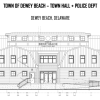USS Arizona artifact finds home at Fort Miles
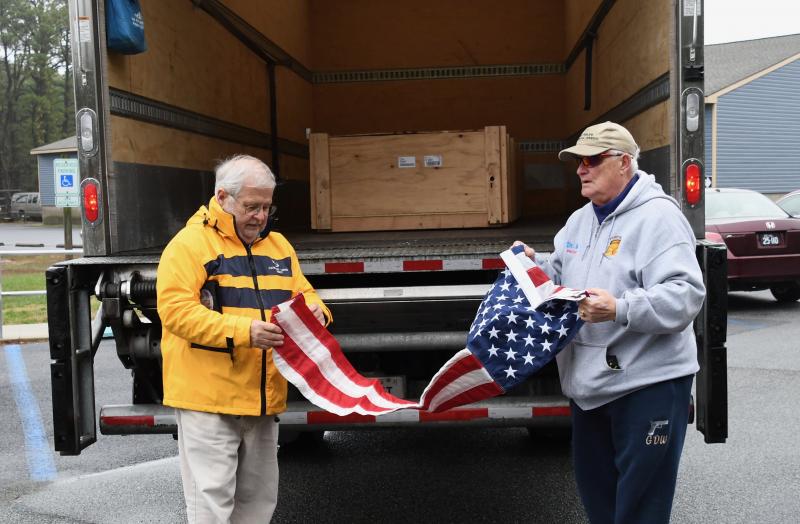
A vision from a decade ago has materialized, arriving in a FedEx delivery truck March 23 at Cape Henlopen State Park.
Park staff and Fort Miles Historical Association volunteers were on hand to accept a 650-pound steel artifact from the USS Arizona, which sank during the Dec. 7, 1941 attack on Pearl Harbor, Hawaii, claiming the lives of more than 1,100 sailors and Marines.
Designated as a national shrine, the Pearl Harbor National Memorial was dedicated in May 1962.
Association board member and U.S. Navy veteran Cliff Geisler, who headed the association's Arizona Task Force, said after Navy officials realized they couldn't salvage the entire ship, in 1943 crews started cutting off parts of the superstructure and stored them in forested areas around Pearl Harbor.
In 1995, Congress authorized donations of steel pieces if organizations covered costs, Geisler said.
Under a U.S. Navy program, pieces of the ship have been donated for displays all over the world, including several in Arizona.
When the artifact was delivered, association board President Gary Wray and Geisler also unveiled a United States flag that flew over the Arizona in 1980, donated to the association by Lewes City Councilman Dennis Reardon.
“Now we have bookends from the start and end of World War II,” Wray said.
Fort Miles already has a gun barrel on display from the USS Missouri, the ship where on Sept. 2, 1945, the Japanese signed documents of surrender to end the war in the Pacific.
Wray said the only other places with relics from the start and end of the War in the Pacific are at Pearl Harbor, the resting place of the Arizona and the restored Missouri, and in a display in Arizona.
The artifact will be encased in its own display with a preview ceremony scheduled on the Great Dune Overlook in early June, Wray said.
Out of respect for the lives lost on the Arizona, Geisler said the artifact will be displayed as it is without any restoration work.
Volunteers make it happen
Wray said although the idea was born 10 years ago, the effort to obtain an Arizona artifact started in earnest two years ago. He said naval officials offered three steel artifacts, including one measuring about 10-by-3 feet. “We wanted to go big, so we asked for the larger size,” Wray said.
That set into motion a series of meetings, phone calls and emails to determine a way to ship the artifact from Hawaii to Lewes.
Jeff Schellinger, an association volunteer Bunker Buster and retired U.S. Air Force lieutenant colonel, contacted some pilots he knew at FedEx, and the request eventually made it to the desk of FedEx CEO Fred Smith, who approved the shipping as a donation, Wray said.
It was shipped by plane from Hawaii to Baltimore and then by truck to Cape Henlopen State Park.
Geisler worked with Navy officials and Seabees to ensure the artifact was properly packed for shipment in a large wooden crate.
The task force had planned a ceremonial parade to escort the delivery truck to the state park, but the state of emergency due to COVID-19 halted that, Wray said.
Instead, the truck was met by a few volunteers and park staff who hauled the crate off the truck for storage in a state park facility.
About Fort Miles
The Fort Miles Historical Association formed in 2003 and, working in partnership with Delaware State Parks, serves to restore the Fort Miles Museum and Historical Area, and assist with its operations.
Fort Miles was constructed during World War II as a vital coastal defense installation to deter potential German attacks on key East Coast infrastructure and port cities, such as Philadelphia and Wilmington. Later, it was home to the top-secret U.S. Navy SOSUS programs.
